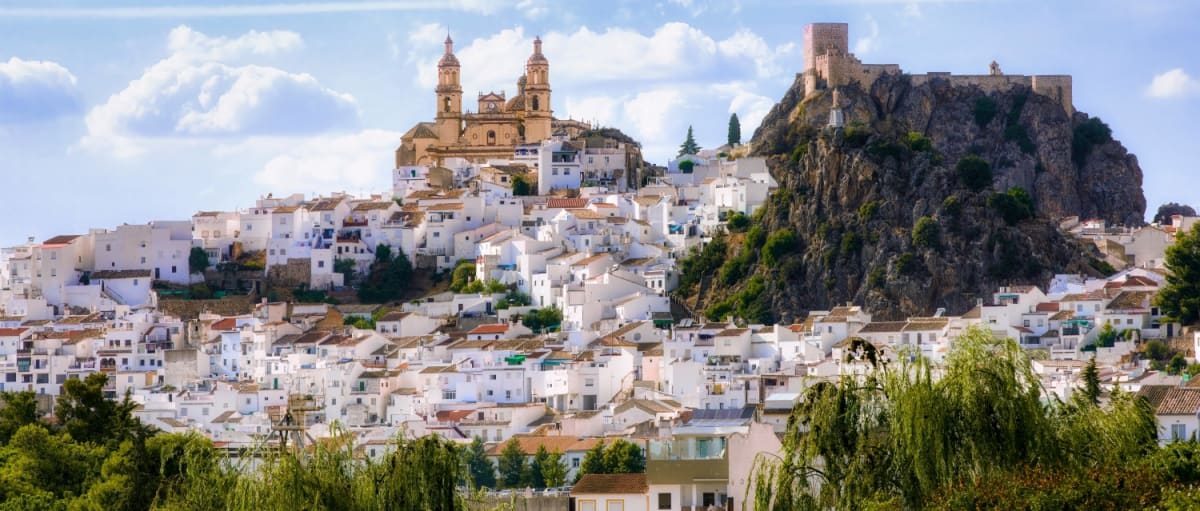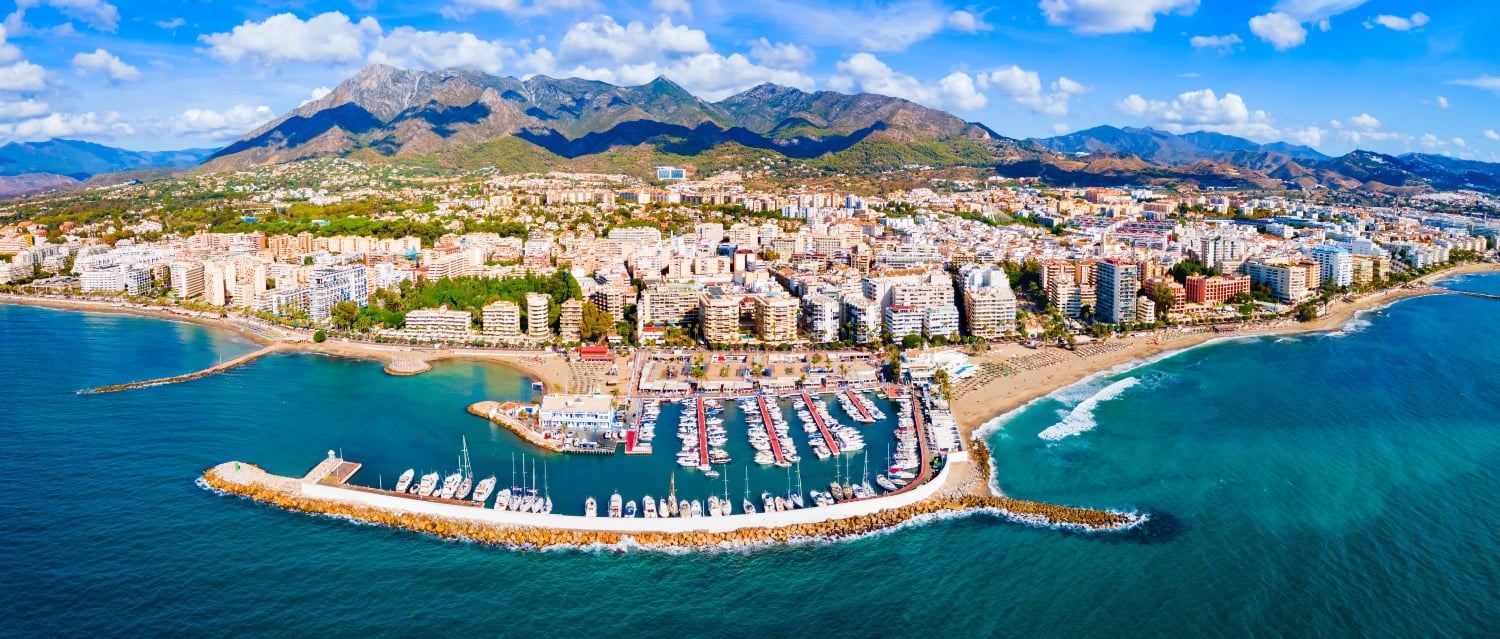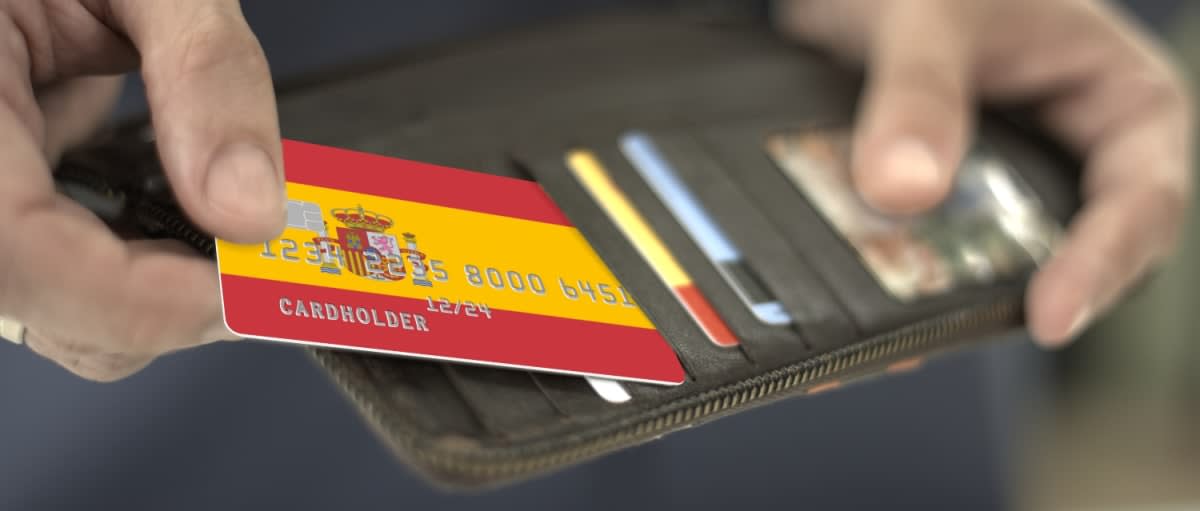With 325 days of sunshine a year, easy access from all over Europe and a wide range of properties at every price point, the Costa del Sol continues to be one of Spain’s top destinations for overseas buyers. Here’s how to find the right location, what kind of homes you can expect for your budget and why buying here can be a smart lifestyle and investment choice.
From lively beach resorts to peaceful white villages tucked into the hills, the Costa del Sol offers something for everyone. Whether it’s lazy lunches on your own terrace, earning rental income while you’re away or having a sunny escape always on standby – this guide will walk you through every step of buying on the Costa del Sol.
Download the Spain Buying Guide
Contents
Why buy property on the Costa del Sol?
The name says it all: the “sunshine coast” enjoys an average of 325 days of sunshine a year. For many buyers, that’s reason enough. But the appeal goes far beyond the weather.
You’ll find a well-established expat community here, especially among British, Irish and Scandinavian retirees, meaning support networks and English-speaking services are easy to come by. The coast is also packed with golf courses, marinas, beach clubs and wellness centres – ideal if you’re after an active retirement or simply want your holiday home to be more than just a base.
There’s also the convenience: regular and affordable flights into Málaga make it easy to enjoy quick getaways, even just for a weekend. The coast’s strong infrastructure – including public transport and healthcare – makes it viable for year-round living, not just seasonal stays.
Is the Costa del Sol a good investment?
Spain’s Costa del Sol is part of Andalucía – one of the most tax-efficient autonomous regions in the country. As of 2025, resale properties incur a flat 7% transfer tax, while new builds are subject to 10% VAT. These rates are good compared to other regions in Spain.
Rental yields vary by location and property type, but the Costa del Sol’s long holiday season gives owners a chance to earn income well into the shoulder months. From mid-March through to late October, demand remains strong.
New regulations introduced in 2024 allow local councils to control the number and conditions of tourist rentals. This may affect short-term letting potential in some municipalities – but it’s also creating more quality standards and transparency in the market.
Longer-term rentals are becoming an increasingly attractive option for northern Europeans looking to enjoy a milder climate during the winter months.
What does the local property market look like?
One of the strengths of this region is its variety. From luxury villas in Marbella to simple apartments in traditional towns, there’s something for nearly every buyer. You’ll also find a strong pipeline of new builds, especially along the western coast, with developments that often include pools, gyms, gardens and concierge-style services.
Here’s a look at what to expect for different budgets:
| Property type | Location | Approx. price range |
|---|---|---|
| Renovation project | Inland village | €50,000-€100,000 |
| Two-bedroom apartment | Coastal town (10-15 mins walk to beach) | From €200,000 |
| Detached villa with pool | Suburban/inland Costa | From €500,000 |
| Luxury new-build penthouse | Marbella area | €700,000+ |
Search Costa del Sol Properties
Where to buy on the Costa del Sol
Málaga
The cultural and economic heart of the Costa del Sol, Málaga offers a mix of history, city living and beach access. It has over a dozen beaches and is home to a thriving arts and dining scene. It’s particularly appealing to digital nomads, part-time residents and anyone who loves urban energy with a coastal backdrop.
Marbella
If luxury is top of your list, Marbella is a clear contender. With golf courses, gourmet dining and designer boutiques, it’s known for its prestige but also offers family-friendly zones like San Pedro de Alcántara and a charming old town. Expect sleek villas and gated communities with concierge-level services.
Benalmádena
Split between a pretty old town (Benalmádena Pueblo) and a beachside resort, Benalmádena is versatile and affordable. Families enjoy the parks and attractions, while buyers appreciate the reliable rental market and sea views from higher ground.
Mijas
This whitewashed village is a magnet for buyers who want traditional charm without giving up proximity to the coast. You’ll find cobbled streets, panoramic views and low-cost homes that are ideal for renovation or retirement living.

Fuengirola
Known for its wide sandy beaches, vibrant markets and strong community vibe, Fuengirola balances expat convenience with authentic Spanish flair. Look inland for better value – some properties with sea views are still reasonably priced.
Estepona
Often dubbed ‘the garden of the Costa del Sol’, Estepona is laidback and local, with a beautiful old town and a quieter vibe than neighbouring Marbella. The weekly market is a highlight, and the fishing port means excellent seafood options.
Nerja
On the eastern edge of the Costa del Sol, Nerja has a slower pace, charming old streets and access to both beaches and mountains. It’s one of the few towns where you can swim in the sea in the morning and ski in the Sierra Nevada by afternoon during winter.
What’s the weather like?
The Costa del Sol has the most reliable sunshine on mainland Spain. July and August regularly reach 30-32°C, and you’ll still see mid-20s temperatures well into October. Winters are mild – even in January, highs can reach 17°C. You will get the occasional heatwave, but coastal breezes tend to take the edge off.
How do you get to the Costa del Sol?
Málaga airport (AGP) is the gateway to the region, with direct flights to and from the UK and major European cities. The airport is just 8km from the city centre, and there’s a reliable train line that runs along much of the coast, stopping at places like Torremolinos, Benalmádena and Fuengirola.
How to buy a home here
- Search online: start browsing homes on the Your Overseas Home portal to get a feel for prices and shortlist your preferred locations.
- Build your team: connect with a local estate agent, a bilingual solicitor, a currency specialist like Smart Currency Exchange, and – if needed – a financial advisor or mortgage broker.
- Book a viewing trip: once you’ve shortlisted homes, head out to the Costa del Sol. A viewing trip will help you get a true sense of the local area, travel times and amenities.
- Make an offer: if you find the right property, you’ll sign a reservation contract and pay a small fee to take it off the market.
- Complete the sale: with legal checks complete, you’ll sign the public deed (escritura) at the notary’s office or via power of attorney. Expect to pay a 10% deposit early in the process and the remainder upon completion.
FAQs about buying property on the Costa del Sol
Yes – the Costa del Sol remains one of Spain’s most attractive regions for property investment. Rental demand is strong thanks to a long holiday season running from spring to late autumn, and longer-term rentals are increasingly popular among northern Europeans seeking winter sun. While new rules allow councils to regulate tourist rentals, this is also improving standards and transparency, giving buyers more confidence.
The most affordable options are usually inland villages and towns set back from the coast. Renovation projects can start from as little as €50,000, while modern apartments in smaller coastal towns such as Benalmádena or Fuengirola are often more affordable than luxury hotspots like Marbella.
No, property prices in the Costa del Sol are not falling – in fact, they’ve reached record highs in 2025, with strong growth across the region. Demand for homes in prime locations remains strong, particularly for new-build developments with modern amenities.
You might also like:









